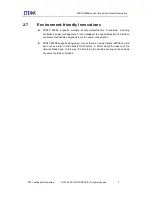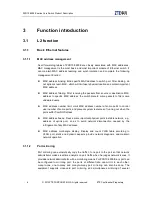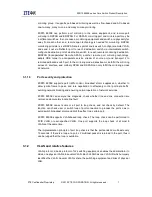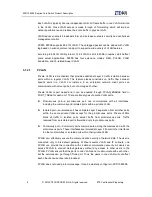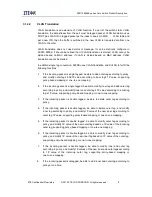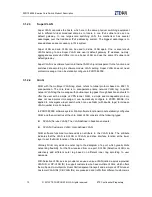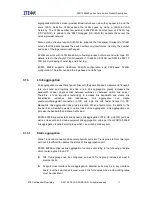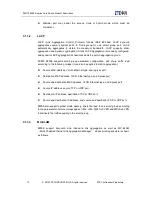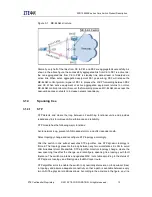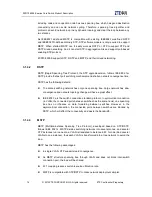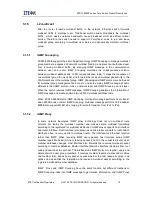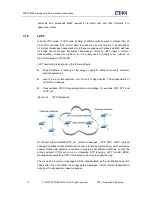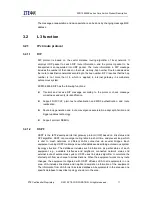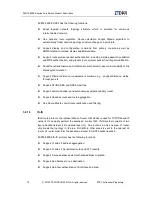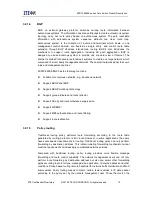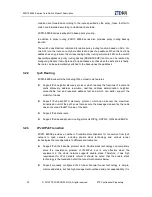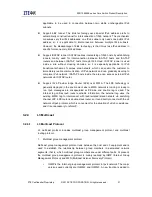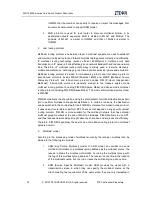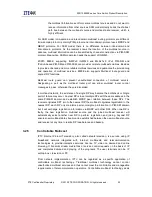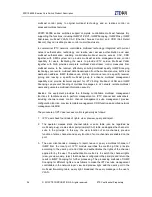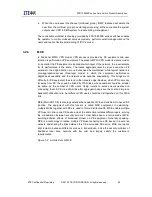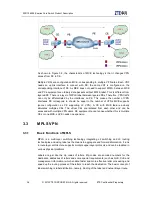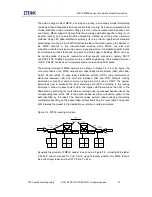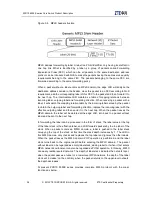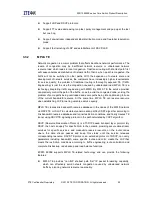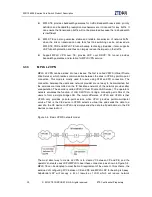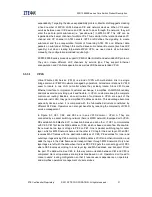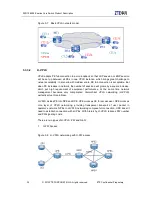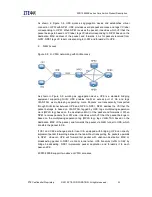
ZXR10 8900E series Core Switch Product Description
18
© 2013ZTE CORPORATION. All rights reserved.
ZTE Confidential Proprietary
ZXR10 8900E OSPF has the following functions:
Adopt layered network topology structure which is suitable for enormous
interconnected network.
Use dynamic route algorithm. Route calculation adopts Dijiksra algorithm to
automatically follow network topology structure change at a quick rate;
Support display and configuration command from primary console as well as
SNMP-related command, display and MIB variable.
Support route protocol packet authentication, including simple password validation
and MD5 authentication, and prevent route protocol packet from illegal modification.
Adopt the retransmission and confirmation mechanism to assure the reliability of link
status synchronization.
Support different distance measurement solutions, e.g., physical distance, delay,
throughput, etc.
Support STUB AREA and NSSA functions.
Support domain boundary and autonomous system boundary router.
Support classless route and route aggregation.
Use Route-Map to control route reallocation and filtering.
3.2.1.3
IS-IS
IS-IS route protocol, the representation of router OSI model, is used for TCP/IP-based IP
network. It can easily perform the extension, mainly IPv6. IS-IS system consists of two
layers: backbone layer (L2) and area layer (L1). One router is in only one area. L1 router
only knows the topology in its area. All traffic to other areas is sent to the nearest L2
router. L2 router must form the backbone, similar to OSPF backbone area 0.
ZXR10 8900E IS-IS protocol has the following functions::
Support L1 and L2 address aggregation.
Support L1 and L2 hierarchical routes and ATT identity.
Support 3-area address and smooth area address migration.
Support load balance to one destination.
Support plain text authentication of interface and area.
Summary of Contents for ZXR10 8900E series
Page 1: ...Operator Logo ZXR10 8900E series Core Switch Product Description ...
Page 2: ......
Page 10: ......


